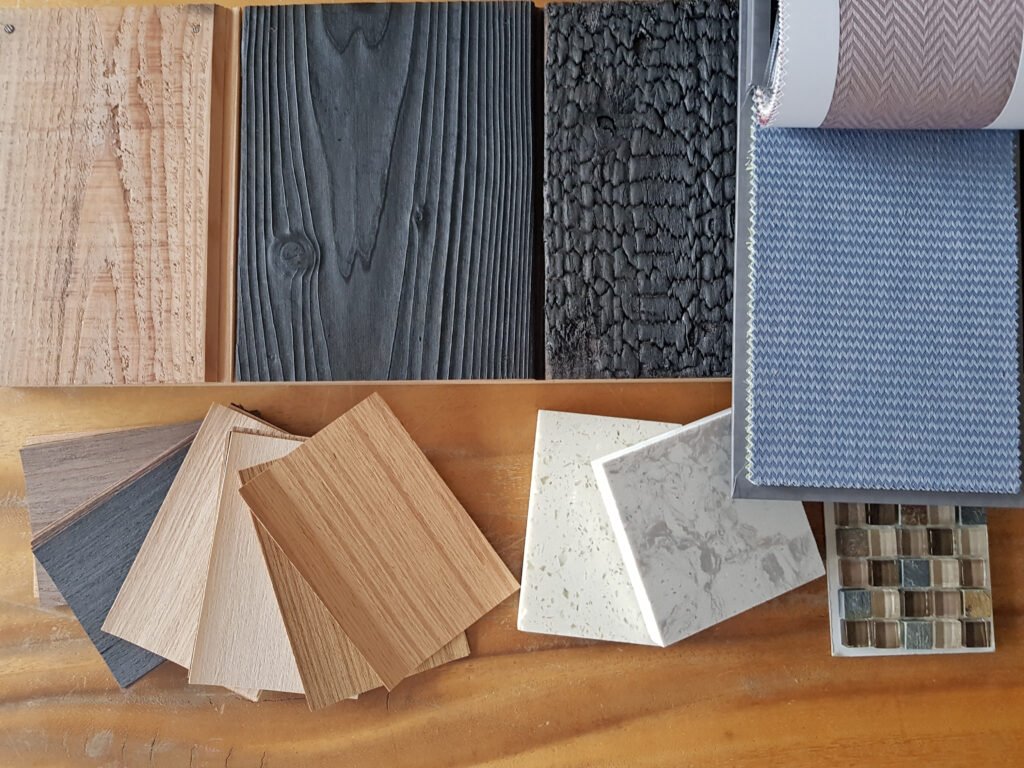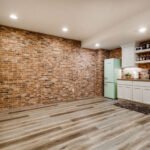Alternatives to Carpet: Affordable and Popular Flooring Options

When it comes to flooring, carpet has long been a popular choice for many homeowners. However, with the rise of modern design trends and the increasing demand for easy-to-maintain and durable flooring options, many are now seeking alternatives to carpet. This article aims to provide an in-depth look at some of the most affordable and popular flooring options available in the market today, which serve as excellent alternatives to carpet.
- Laminate Flooring: An Overview
- Vinyl Flooring: Pros and Cons
- Ceramic Tile Flooring: A Durable Choice
- Hardwood Flooring: Classic and Timeless
- Bamboo Flooring: A Sustainable Option
- Cork Flooring: Comfort and Durability
- Concrete Flooring: Modern and Versatile
- Linoleum Flooring: Eco-friendly and Affordable
- Rubber Flooring: Ideal for High Traffic Areas
- Terrazzo Flooring: Artistic and Unique
- Natural Stone Flooring: Luxury and Elegance
- Engineered Wood Flooring: Stability and Style
- Porcelain Tile Flooring: High-end and Resilient
- Epoxy Flooring: Industrial and Resistant
- Peel and Stick Tile Flooring: Easy Installation
- Plywood Flooring: Budget-friendly and Creative
- Stained Concrete Flooring: Customizable and Trendy
- Luxury Vinyl Plank Flooring: Realistic and Waterproof
- Parquet Flooring: Intricate and Traditional
- Reclaimed Wood Flooring: Rustic and Eco-conscious
Laminate Flooring: An Overview
Laminate flooring is one of the most popular alternatives to carpet due to its affordability and versatility. It is a multi-layer synthetic flooring product that simulates wood or sometimes stone with a photographic applique layer under a clear protective layer. The inner core layer is typically composed of melamine resin and fiberboard materials. Laminate flooring is easy to install, maintain, and can withstand heavy foot traffic, making it an ideal choice for busy households. However, it's important to note that while laminate flooring is resistant to many types of damage, it can be susceptible to moisture and isn't as long-lasting as some other flooring options.
Vinyl Flooring: Pros and Cons
Vinyl flooring is another popular choice among alternatives to carpet. It is a synthetic flooring material that is durable, easy to install, and affordable. Vinyl flooring comes in a wide range of colors, patterns, and textures, making it a versatile choice for any room in the house. It is also water-resistant, making it a good choice for bathrooms and kitchens. However, vinyl flooring can be prone to scratches and dents, and lower-quality vinyl may not be as durable as other flooring options.
Ceramic Tile Flooring: A Durable Choice
When it comes to durability, few alternatives to carpet can match ceramic tile flooring. Made from a mixture of clay and other natural materials, ceramic tiles are fired in a kiln and then glazed to create a hard, durable surface. They are resistant to water, stains, and wear, making them an excellent choice for high-traffic areas. However, ceramic tiles can be cold and hard underfoot, and they can be slippery when wet. Installation can also be more complex and time-consuming than other flooring options.
Hardwood Flooring: Classic and Timeless
Hardwood flooring is one of the most classic and timeless alternatives to carpet. It offers a warm, natural look that can add significant value to your home. Hardwood floors come in a variety of wood species, colors, and widths, allowing for a high degree of customization. While hardwood floors can be more expensive than other flooring options, they can last for decades with proper care. However, they can be susceptible to scratches, dents, and water damage, so they may not be the best choice for every room.
Bamboo Flooring: A Sustainable Option
For those seeking eco-friendly alternatives to carpet, bamboo flooring is an excellent choice. Bamboo is a rapidly renewable resource, making it a more sustainable choice than traditional hardwoods. Bamboo flooring is durable, attractive, and available in a variety of colors and styles. However, like hardwood, it can be susceptible to scratches and dents, and it may not be suitable for areas with high moisture levels.
Cork Flooring: Comfort and Durability
Cork flooring is another eco-friendly option among alternatives to carpet. Made from the bark of the cork oak tree, cork flooring is renewable, recyclable, and biodegradable. It offers a unique look and a soft, cushiony feel underfoot. Cork flooring is also naturally resistant to mold, mildew, and pests, and it provides excellent sound insulation. However, it can be susceptible to scratches and dents, and it may fade in direct sunlight.
Concrete Flooring: Modern and Versatile
Concrete flooring is a modern and versatile option among alternatives to carpet. It offers a sleek, contemporary look that can be customized with stains, dyes, and textures. Concrete flooring is extremely durable and can withstand heavy foot traffic. It is also easy to clean and maintain. However, concrete can be hard and cold underfoot, and it may not be the most comfortable choice for living areas or bedrooms.
Linoleum Flooring: Eco-friendly and Affordable
Linoleum flooring is an eco-friendly and affordable option among alternatives to carpet. Made from natural materials like linseed oil, cork, and jute, linoleum is biodegradable and recyclable. It is durable, easy to clean, and available in a wide range of colors and patterns. However, linoleum can be susceptible to scratches and dents, and it may not be as long-lasting as some other flooring options.
Rubber Flooring: Ideal for High Traffic Areas
Rubber flooring is an ideal choice for high traffic areas among alternatives to carpet. It is durable, water-resistant, and easy to maintain. Rubber flooring also provides excellent sound insulation and a comfortable, cushiony feel underfoot. It is available in a wide range of colors and patterns, allowing for a high degree of customization. However, rubber flooring can be more expensive than other flooring options, and it may not be the best choice for every room.
Terrazzo Flooring: Artistic and Unique
Terrazzo flooring is an artistic and unique option among alternatives to carpet. It is made by embedding small pieces of marble, granite, quartz, or glass in a cementitious or resinous binder. The surface is then polished to a high shine, revealing the beauty of the aggregate. Terrazzo flooring is extremely durable and can last for decades with proper care. However, it can be expensive and time-consuming to install, and it may be slippery when wet.
Natural Stone Flooring: Luxury and Elegance
Natural stone flooring is a luxurious and elegant option among alternatives to carpet. It offers a unique, high-end look that can add significant value to your home. Natural stone flooring comes in a variety of types, including marble, granite, slate, and limestone, each with its own unique characteristics. However, natural stone can be expensive and requires regular maintenance to keep it looking its best. It can also be cold and hard underfoot.
Engineered Wood Flooring: Stability and Style
Engineered wood flooring is a stylish and stable option among alternatives to carpet. It is made from multiple layers of wood veneer, which are bonded together under high pressure. This construction makes engineered wood flooring more stable and less susceptible to changes in humidity and temperature than solid hardwood. It offers the same warm, natural look as hardwood, but it can be more affordable and easier to install. However, engineered wood flooring may not be as durable as solid hardwood, and it can be susceptible to scratches and dents.
Porcelain Tile Flooring: High-end and Resilient
Porcelain tile flooring is a high-end and resilient option among alternatives to carpet. It is made from a type of ceramic that is fired at a higher temperature, making it denser, harder, and less porous than regular ceramic tile. Porcelain tile is extremely durable and resistant to stains, water, and wear. It is available in a wide range of colors, patterns, and textures, allowing for a high degree of customization. However, porcelain tile can be expensive and difficult to install, and it can be cold and hard underfoot.
Epoxy Flooring: Industrial and Resistant
Epoxy flooring is an industrial and resistant option among alternatives to carpet. It is made by applying a layer of epoxy resin over a concrete substrate. The result is a smooth, seamless surface that is extremely durable and resistant to stains, water, and wear. Epoxy flooring is easy to clean and maintain, making it an ideal choice for garages, basements, and other high-traffic areas. However, it can be slippery when wet, and it may not be the most comfortable choice for living areas or bedrooms.
Peel and Stick Tile Flooring: Easy Installation
Peel and stick tile flooring is an easy-to-install option among alternatives to carpet. It is made from vinyl or other materials that are backed with a self-adhesive. To install, simply peel off the backing and stick the tiles to the floor. Peel and stick tile flooring is affordable, versatile, and available in a wide range of colors and patterns. However, it may not be as durable or long-lasting as other flooring options, and it may not be suitable for areas with high moisture levels.
Plywood Flooring: Budget-friendly and Creative
Plywood flooring is a budget-friendly and creative option among alternatives to carpet. It is made from thin layers of wood veneer that are glued together in opposite directions, creating a strong and stable material. Plywood flooring can be stained, painted, or sealed to create a variety of looks. It is affordable, easy to install, and can be a good choice for DIY projects. However, plywood flooring may not be as durable or long-lasting as other flooring options, and it may not be suitable for areas with high moisture levels.
Stained Concrete Flooring: Customizable and Trendy
Stained concrete flooring is a customizable and trendy option among alternatives to carpet. It is made by applying a colored stain to a concrete substrate. The stain penetrates the concrete, creating a permanent color that won't fade or peel. Stained concrete flooring is durable, easy to maintain, and can be customized with a wide range of colors and patterns. However, like other concrete flooring options, it can be hard and cold underfoot, and it may not be the most comfortable choice for living areas or bedrooms.
Luxury Vinyl Plank Flooring: Realistic and Waterproof
Luxury vinyl plank flooring is a realistic and waterproof option among alternatives to carpet. It is made from multiple layers of vinyl that are fused together under high heat and pressure. The top layer is a high-resolution photographic image of natural wood or stone, followed by a clear protective layer. Luxury vinyl plank flooring is extremely durable, water-resistant, and easy to install. It offers the look of natural materials at a fraction of the cost. However, it can be susceptible to scratches and dents, and lower-quality vinyl may not be as durable as other flooring options.
Parquet Flooring: Intricate and Traditional
Parquet flooring is an intricate and traditional option among alternatives to carpet. It is made from small pieces of wood that are arranged in a geometric pattern, creating a unique and eye-catching design. Parquet flooring is durable, long-lasting, and can add significant value to your home. However, it can be expensive and time-consuming to install, and it requires regular maintenance to keep it looking its best.
Reclaimed Wood Flooring: Rustic and Eco-conscious
Reclaimed wood flooring is a rustic and eco-conscious option among alternatives to carpet. It is made from wood that has been salvaged from old buildings, barns, and other structures. Reclaimed wood flooring offers a unique, rustic look that can't be replicated with new wood. It is also a more sustainable choice, as it reuses existing materials instead of requiring new trees to be cut down. However, reclaimed wood flooring can be expensive and requires regular maintenance to keep it looking its best.
There are many affordable and popular alternatives to carpet available today. From laminate and vinyl to hardwood and bamboo, each flooring option offers its own unique set of benefits and drawbacks. When choosing a new flooring material, it's important to consider factors such as cost, durability, maintenance requirements, and aesthetic appeal. By doing so, you can find the perfect flooring option that not only meets your needs but also enhances the overall look and feel of your home.





Leave a Reply